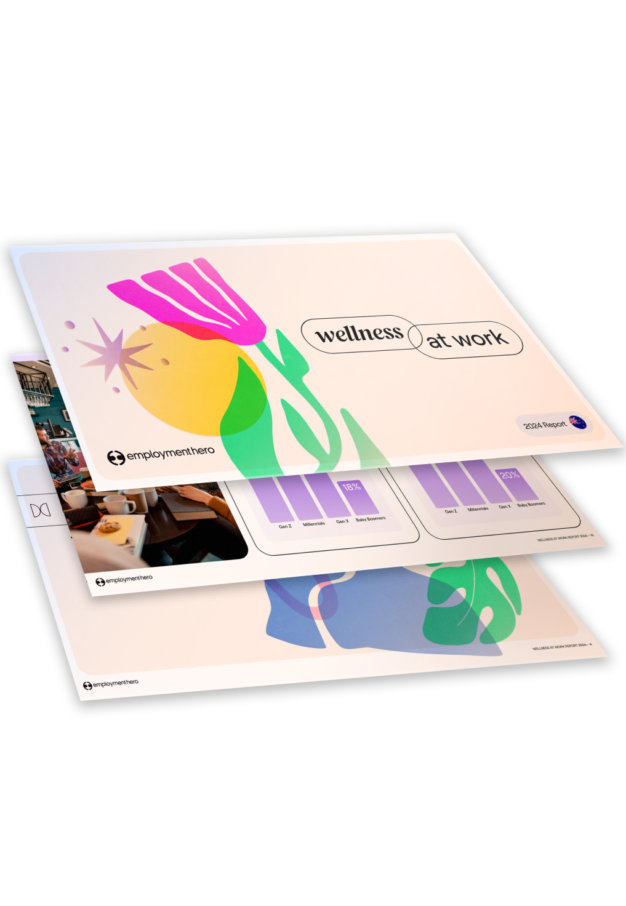
How do you feel about work right now? Productive? Stressed? Burnt out?
We’ll take a guess and say that however you’re feeling right now, the national climate may be an undertone of those feelings.
Precious little economic growth, stubbornly high inflation, interest rates that just won’t come down, and a rising unemployment rate is making it harder for businesses to operate and grow. New Zealand may have just edged out of a technical recession but the economy is still much weaker than anyone would like.
With so many factors at play, it’s clear we’re all feeling an unnerving mix of uncertainty and concern – and these events are influencing your employees in a major way. They can significantly impact one’s sense of wellbeing, which can seep into every part of life – including work.
You may be in perfect physical health, but do you really feel well if you’re in financial distress? You may have a strong sense of occupational fulfilment, but if you don’t feel that you can authentically communicate with others, you might feel excluded.
The good news is, what employers do to support their employees’ wellness can make a big difference. By being informed about how your team is feeling, employers can make employees feel more supported, fight risks to their wellbeing, and improve overall happiness in every aspect of their lives.
We spend, on average, one-third of our lives at work, which can be exhausting if our wellbeing isn’t supported. That’s why we surveyed over 1,000 workers from around New Zealand between 12 April to 1 May 2024.
We asked workers from New Zealand about their mental health, how happy they are with their professional relationships, how comfortable they are talking to their manager about hairy topics, how they’re managing the current cost of living crisis, plus so much more.
The results are essential reading for any business leader in 2024. While some results might surprise you, others are crystal clear. Our responses sit on a scale from worrying to insightful, with some pleasantly surprising results to round us out.
In the 2024 Wellness at Work report, we cover;
- The important 2024 wellness headlines;
- The wellness progress report: 2022 vs. 2024;
- The great generational divide;
- Mental health and an unstable world;
- How Kiwis are holding up in a cost of living crisis;
- The prevailing sense of camaraderie at work;
- If Kiwis and Aussies differ or relate when it comes to wellness at work.
Download the report now.
Definition box:
What is burnout? If you’re unsure what constitutes burnout, Headspace defines it as the feeling of being “constantly exhausted, emotionally drained, unproductive, and unmotivated at work”.

Key findings
of employees have felt burnt out in the past 3 months due to work.
of employees are satisfied with the working relationships they have with their colleagues.
of Kiwis are satisfied with the working relationship they have with their manager.
of Kiwis are experiencing stress at least a few times a month or more.
The majority of Kiwis indicated that financial stress and the cost of living was by far the main source of stress in the last 3 months.
Over half of Gen Z are taking stress leave due to burnout, compared to one in five Baby Boomers.
Insights from Sanam Ahmadzadeh Salmani – Legal Counsel, Employment Hero
How can employers stay across psychosocial hazards in the workplace?
Since the pandemic, New Zealand workplaces have undergone rapid change. Unfortunately, these changes have also led to a rise in psychosocial cases at the Employment Relations Authority (ERA). With burnout on the rise, employers can stay ahead of these hazards to be compliant and foster a better workplace culture.
Communication is key. Regular check-ins and anonymous surveys help identify industry-specific stressors. It’s critical for employers to act on any concerns quickly and to investigate accordingly. Once you understand employee concerns, clear policies alongside support resources like training and wellbeing programs can continue to foster employee wellbeing.
By actively managing psychosocial hazards, employers can cultivate a happier, more productive workforce with reduced conflict and a stronger sense of belonging – a win-win for everyone.
Insights from Jay Barrett – Workplace Psychologist, Glia
It’s been a challenging few years for much of the workforce and we need to acknowledge that. Some people have used this as a catalyst for change, shifting to careers that better align with their values and purpose. Others have been affected by job insecurity, increased work demands and workplace loneliness.
Making sure we take a multi-faceted approach to protecting mental health over 2024 will be important; after all, we want our people to thrive! The question is how?
- Equip your people with psychological strategies to use in their day to day to protect their mental health.
- Ensure teams and leaders can identify mental health issues and know what their role is in the support process (including getting the person to a psychologist).
- Create organisational structures and design safe, socially supportive jobs that are setting people up for success to achieve their goals while mitigating psychosocial hazards.
Methodology and sample profile
The findings in this report have been determined from a survey organised by Employment Hero.
The 10 minute online quantitative survey was deployed using the QuestionPro platform, and survey responses were collected from NZ-based respondents which fit the survey respondent criteria below.
To complete the survey, respondents had to be employed in any capacity (full time, part time, casual, fixed term) and not own the business they worked in. Readers should be mindful that this places a skew on the sample distribution with fewer respondents in the 18-24 and 65+ age groups, as they are more likely to either not be employed or be retired.
In total there were 1002 survey participants, with responses collected between 12 April to 1 May 2024.


